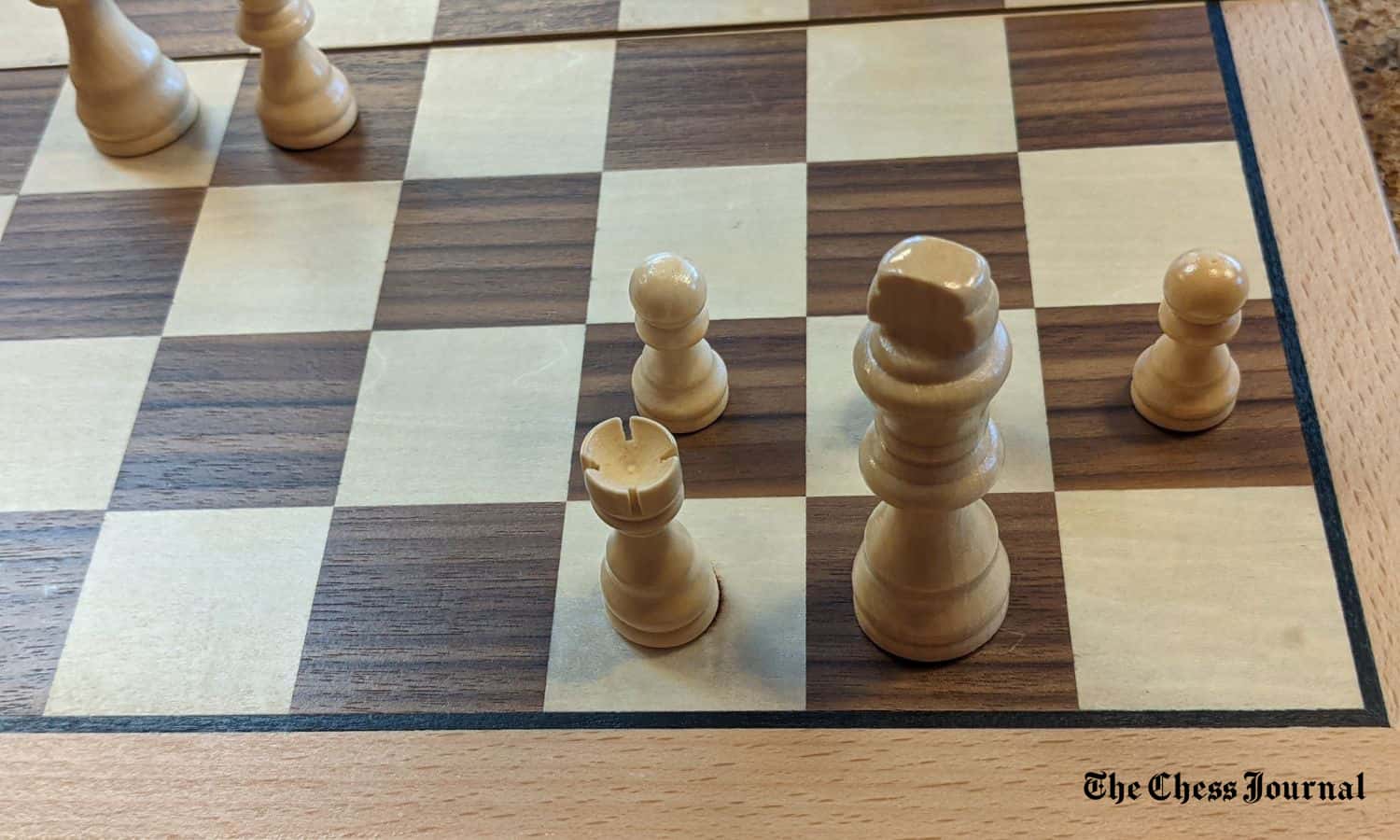In Chess, castling is a single move done during the opening in which the player moves his King and Rook either Kingside or Queenside for the purpose of getting the King out of the center of the board, where it’s more vulnerable to attacks, to a safer position.
Last Updated:
Castling is a unique and essential move in the game of chess, enabling players to ensure their king’s safety and activate their rook simultaneously. This special move has been part of the game’s fabric for centuries, and understanding its strategic value is crucial for players at all levels. In this article, we’ll delve into the history of castling, its rules and limitations, and its strategic implications to help players harness its power to secure victory on the chessboard.
What is Castling in Chess
Castling is a special move in chess done involving the King and King-side Rook or the Queen-side rook. Castling can only be done when the King and King side Rook hasn’t moved yet, and the King-side Knight and Bishop have moved. The sole purpose is to get the King out of the center of the board and into a more secure position making it more difficult to attack.

After castling is performed, the rook moves over two squares with the King moving to the square next to the Rook. This connects the rooks, making them exponentially more powerful.
The King is now moved from a vulnerable position, the center of the board, to a much more secure and protected position protected by pieces around the King.
A Brief History of Castling
Like nearly every aspect of the game in the history of chess, the origins of castling can be traced back to the 14th and 15th centuries when chess was evolving in Europe. Initially, castling was a two-move process, where the king and rook each moved independently on separate turns.
The modern form of castling, in which the king and rook move simultaneously, was established in the 17th century, streamlining the game and adding an exciting tactical layer to chess.
Rules and Limitations of Castling
There are two types of castling: kingside (also known as castling short) and queenside (also known as castling long). For more information, see the guide on kingside vs queenside castling. In both cases, the king moves two squares towards the rook, and the rook moves to the square the king skipped over. However, castling is subject to several conditions:
- Neither the king nor the involved rook can have moved previously in the game.
- There must be no pieces between the king and the rook.
- The king cannot be in check or move through a square that is under attack.
- The final positions of the king and rook after castling must not result in a check.
If all of these conditions are not present on the board, the player is unable to castle and doing so would be an illegal move and a violation of the rules in chess.
Strategic Implications
Castling has several strategic benefits for players:
- King Safety: Castling moves the king towards the edge of the board, reducing its vulnerability to attacks. Positioning the king behind a wall of pawns creates a fortress, which can be difficult for the opponent to penetrate.
- Rook Activation: Castling brings the rook closer to the center, allowing it to control more squares and participate in the game. Activating both rooks can lead to doubled rooks on open or semi-open files, generating increased offensive and defensive capabilities.
- Central Control: The pawn structure around the castled king often aids in controlling central squares, a critical aspect of chess strategy. The pawns can form a strong barrier against enemy pieces while supporting friendly pieces as they seek to dominate the center.
- Simplification: In some positions, castling can prepare for a favorable exchange of pieces, leading to an endgame with a material advantage or easier-to-play positions.
Castling is one of few unique moves in the game of chess. It’s very advantageous to do if you can so you can defend your King.
Essentially, it is a way to both protect your king and activate your rook at the same time. It’s the only time in the game of chess where you are allowed to move two pieces in the same move.
When castling, the king will move two squares to the left or right, and the rook will move directly to the other side of the king. This can also be done with the queen instead of the rook in some instances.
When to Castle
While castling is a powerful move, it may not always be the best course of action. Here are some factors to consider before castling:
- Timing: Don’t castle too early, as it may expose weaknesses in your pawn structure. Develop your minor pieces and control the center before considering castling.
- Opponent’s Plans: Be aware of your opponent’s plans, and avoid castling into an area where your king might become a target for a swift attack.
- Flexibility: Sometimes, delaying castling can create uncertainty for your opponent, making it more challenging for them to devise a clear plan.
Importance of Castling
There are a few good reasons to castle in chess.
First and foremost, it is one of the only moves that will allow you to move your king without it getting captured if you’re not careful.
The other reason is that it can protect your rook while also activating the strongest piece in your army.
The last good reason is that castling will not allow you to lose a pawn on either side of the board. Everything else from castling depends on whether or not your opponent can play their pieces, so always consider this before you castle.
Other Special Chess Moves Like Castling
There are a few other special chess moves that can be made, but all of them are at the very end of the chess game. All of them have great advantages and disadvantages, as well as allowing you to castle in some scenarios.
En Passant
The first one is called En Passant. This allows you to take a piece from your opponent without having made any moves yourself. You can take pieces like pawns and even rooks, but king moving en passant is restricted to kings only.
It can only be done with a pawn or a rook, and it works best when you can take the piece from both sides of the board. This is because if your opponent blocks your pieces coming to the king, you will take many more than two.
Sacrifice
The second special move is known as a sacrifice, in which you literally sacrifice a piece to achieve a greater outcome even after losing said piece that was sacrificed. Sacrificing can be used in many situations. It allows you to make more moves than normal as well as protect your own pieces at a great cost. Sacrificing involves sacrificing a piece in order to save the board from being taken.
It should be noted that sacrificing one of your pieces is no guarantee that your other pieces will be safe. In fact, sacrificing pieces to save your king is almost always a very bad idea as it makes you vulnerable to attack and there are often several better moves you can make that will protect both the king and the rest of your army.
Promotion
The third special move would be the promotion. Even though it’s technically not a move like the others are moves, but rather a result that occurs after moving a pawn to the end of the board. Promotion is usually a beneficial move because it allows you to promote a pawn to any other type of piece, including a queen. To promote a pawn, your pawn must make it to the opposite end of the board without being taken. However from there, you’ll be able to move the pawn in any directions that its new piece would normally be able to move.
Frequently Asked Questions
Is it better to castle kingside or queenside?
Castling is done on the King side most of the time. It isn’t necessarily better or worse to do so as it depends on you and your opponents positioning.
Should you castle early in chess?
Castling is normally done early in the game as part of the opening strategy you are using. The earlier you castle, the less likely your King will be vulnerable to attacks.
Should you always castle?
Castling should not be done if doing so will leave other pieces in danger of being attacked without a defender.
Conclusion
Castling is a unique and essential element of chess strategy that can significantly impact the course of a game. Understanding its history, rules, and strategic implications can help players capitalize on its benefits, securing the king’s safety and activating the rook for a stronger position on the board. By mastering the art of castling, players can increase their chances of success and enjoy the rich complexity of chess.
Castling in general, is important to do early in the game. If you wait to long to castle, it opens up more opportunities for your opponent to prevent you from castling or leave you with a worse position if you were to castle.
Sources


